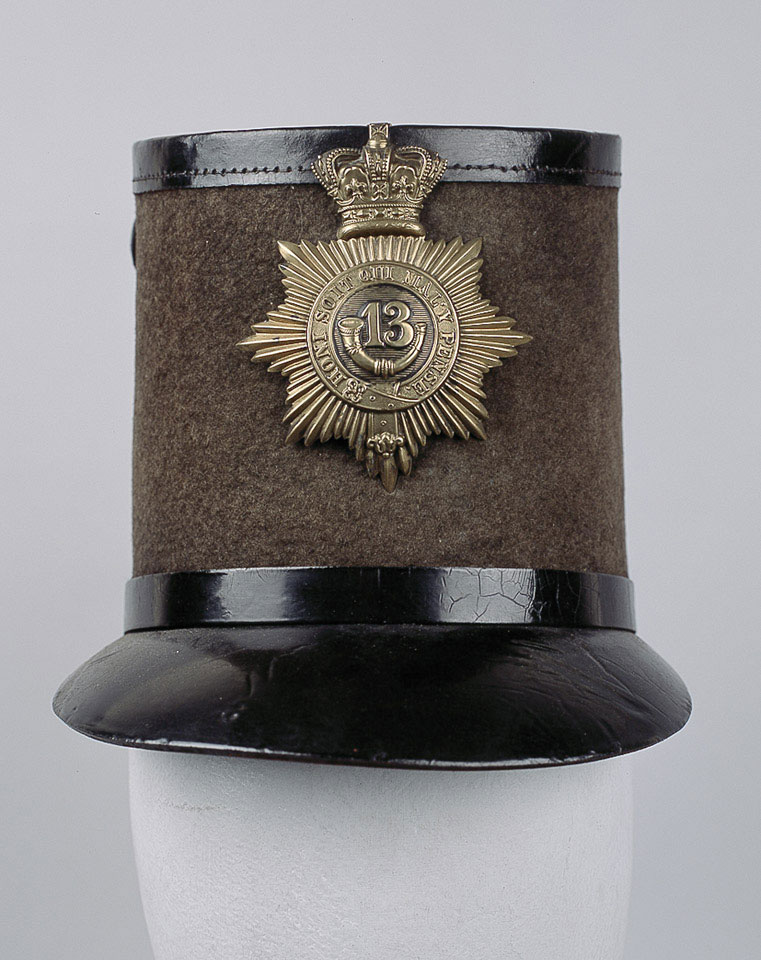
Online Collection
Shako, 13th (1st Somersetshire) or Prince Albert's Regiment, 1855-1861 (c)
The French pattern shako introduced in 1855, although subtly different from the 'Albert' shako which preceded it, still proved heavy and uncomfortable and was superseded by a lighter shako in 1861. The underside of the front peak bears the Adjutant-General's seal.
The word 'shako' originated from a Hungarian word meaning peaked cap, which was a part of the uniform of the Hungarian hussar of the 18th century. From 1800 onwards, the shako became the standard military headress of most regiments in nearly all armies. It retained this dominant position until the mid-nineteenth century, when spiked helmets began to appear in the armies of various German states, and the more practical kepi (a cap with a flat circular top and visor) replaced it for all but parade wear in the French Army. However in some regiments the shako was still being worn as late as 1914. The Highland Light Infantry and Scottish Rifles of the British Army retained shakos for parade dress until World War One, and the Swiss and Dutch armies wore shakos even for field wear until 1916. During this final period of traditional uniforms the shako varied widely between armies in height, colour, trim and profile.
NAM Accession Number
NAM. 1963-09-293-1
Copyright/Ownership
National Army Museum Copyright
Location
National Army Museum, Study collection
Object URL
https://collection.nam.ac.uk/detail.php?acc=1963-09-293-1


